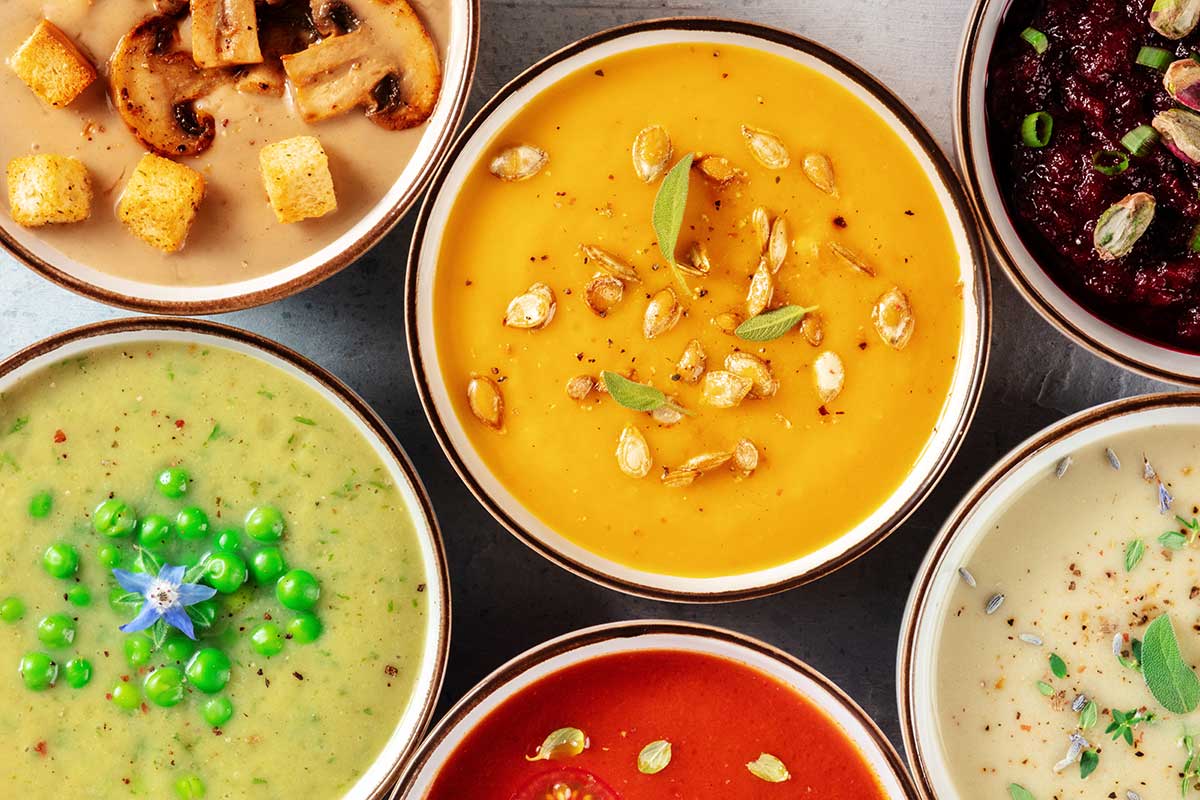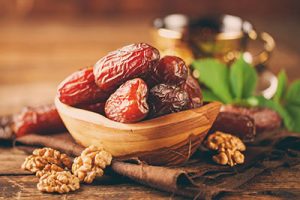
The six tastes of Ayurveda – Part 1
The Ayurvedic science of food and diet is vast and can influence every aspect of life. Tastes (Rasas) are perceived by the tongue as a first experience before being processed. The tastes are the essence of all foods. Every food is made up of a combination of the five basic elements found on earth which support the tastes and have specific effects on our cells, tissues, organs and systems.
The chart below indicates the relationship between Tastes, Elements and their prime Attributes
| Tastes (Rasa) | Elements | Some Attributes | Examples of Foods |
| Sweet | earth, water | damp, cold, heavy | oils, dairy, maple syrup, honey, water |
| Sour | earth, fire | damp, hot, light | citrus, yogurt, vinegar, cheese, lemon, fermented foods |
| Salty | fire, water | damp, hot, heavy | sea salt, rock salt, kelp, cucumber, celery |
| Pungent | fire, air | dry, hot, light | spices, chili, peppers, onion, garlic, mustard, ginger |
| Bitter | air, ether | dry, cold, light | green veggies, turmeric, aloe vera, sandalwood, rhubarb, coffee |
| Astringent | air, earth | dry, cold, heavy | Unripe bananas, pomegrenade, chickpeas, green beans, yellow split peas, okra turmeric, alfalfa sprouts, tea |
The principle behind the tastes is that the 5 physical elements are what are left in the body after digestion of the tastes. So basically the food is broken into elements nourishing their qualities/attributes to the body. For example, eating the sweet taste will produce density and heaviness. Not surprising that finishing the meal with a sweet desert, can produce a feeling of difficult digestion, sleepiness…
Now let’s look at each taste:
Sweet taste gives a sense of comfort, love, satisfaction, the earth in it is good to replenish minerals and the water to support building muscle … Sweet taste is found in basic foods/beverages that have heavy, dense qualities.
Sour taste supports our metabolic activities (agni) the digestive fire and, emotionally helps focus and sustain discernment.
Salty taste supports nerve communication, muscle contraction and water regulation. It is also called the excitement of life! Think about it next time you crave for salty chips! Salt also helps evacuation.
Pungent taste helps the circulation, clears Ama (toxins) and is drying and heating. It is good for the heart, circulation and consequently helping transformation of foods in the digestive tract.
Bitter taste is anti-inflammatory, protecting from toxins and nourishing for the energy (prana). It helps control appetite. Just try finishing your meal with a small salad and you may be surprised by not having your usual craving for desert!
Astringent is purifying; it helps to center Oneself and is also drying like bitter. The British tradition of drinking tea mid afternoon for a time off makes so much sense when you know that astringent taste is conducive for Self reflection, clarity of mind and helping to make order from the daily chaos of life!
Becoming more conscious of what quality (ies) food brings to our body, in terms of the elements and their attributes, can certainly help balance our meals and maybe heal some of our digestive discomfort. The Spring blog will continue this topic with more details on the tastes and their impact on digestion.
To conclude this article, you will find below a recipe for a snack delight to serve during your Holiday get together! Enjoy!
Date Delight
Ingredients: Medjool dates, tahini mixed with a pinch of salt, coconut flakes.
Open the dates enough to remove the pit, fill the inside with tahini, place on a decorative plate then sparkle with coconut flakes. Coconut is sweet & cooling, dates are sweet, tahini is sweet/bitter/astringent/salty when adding a pinch of salt to the tahini before hand. To add the sour taste and complete the 6 tastes, you could enjoy a glass of white wine !!! Cheers!
REF: Frawley D.& S. Ranada 2001. Ayurveda, Nature’s Medicine. Lotus Press Wisconsin. 357 p.
Kacera, W.S. 2006. Ayurvedic Tongue Diagnostic. Lotus Press. 40 p.
Lad, U & V. Lad, 2009. Ayurvedic Cooking for Self-Healing. The Ayurvedic Press, NM. 254 p.



